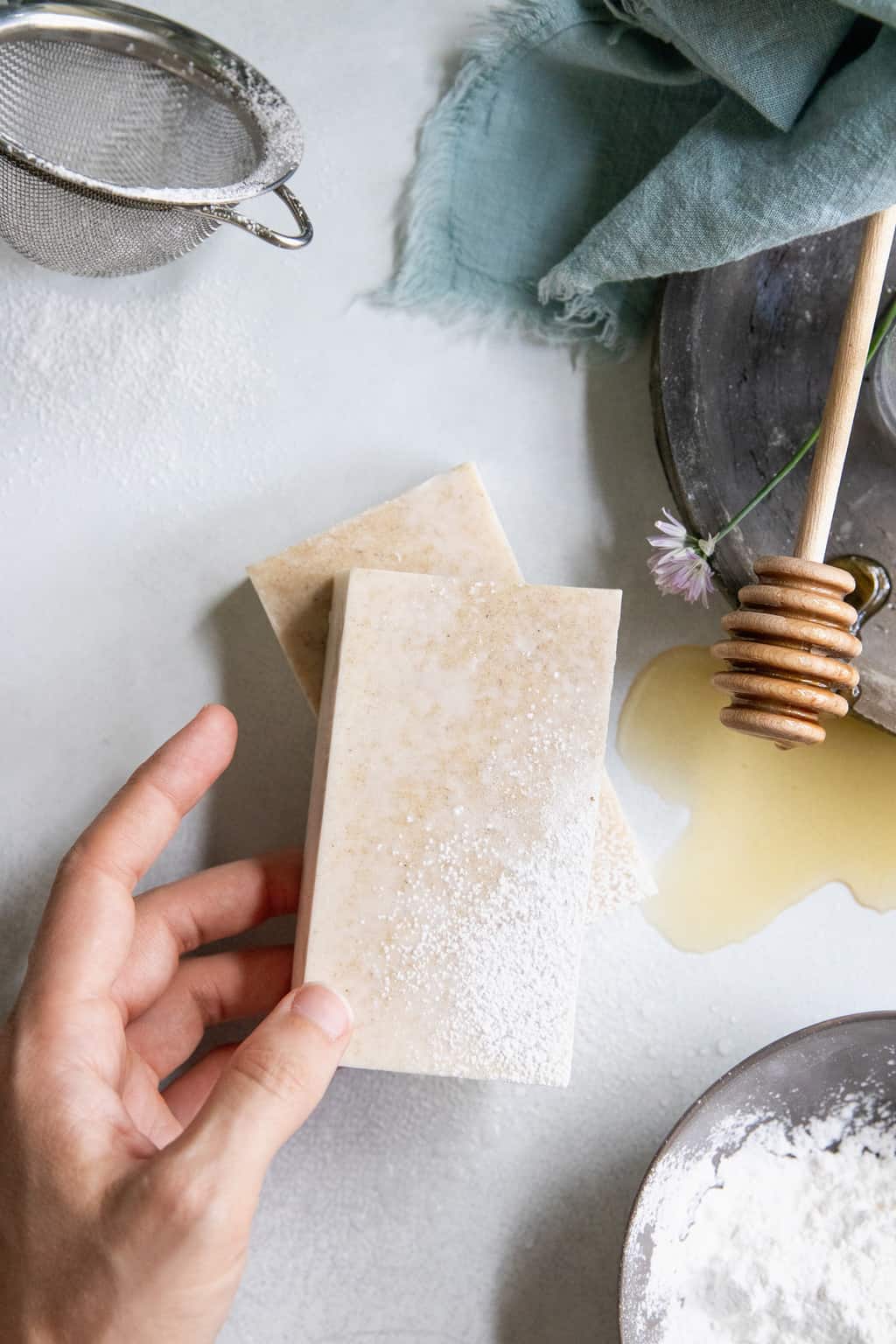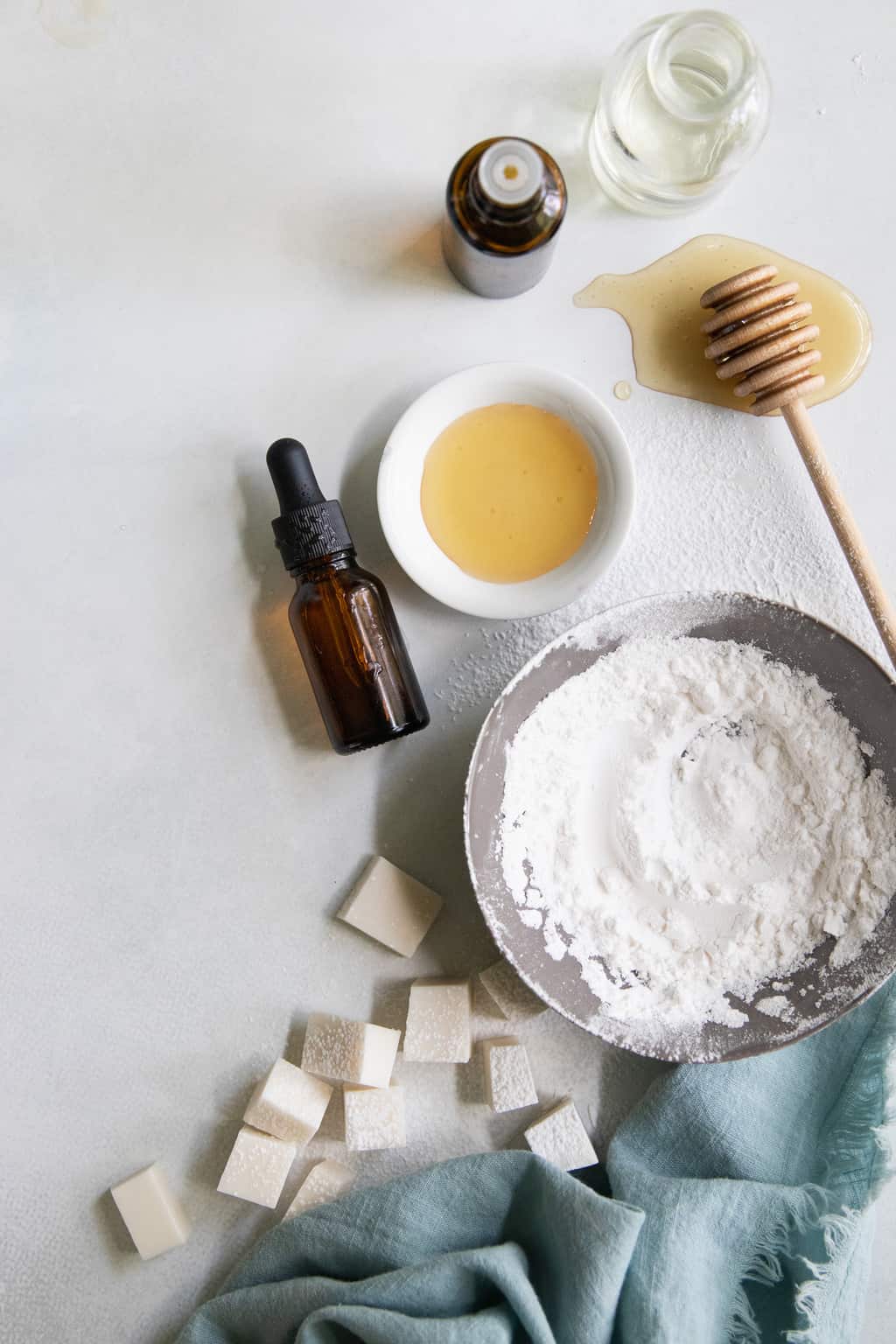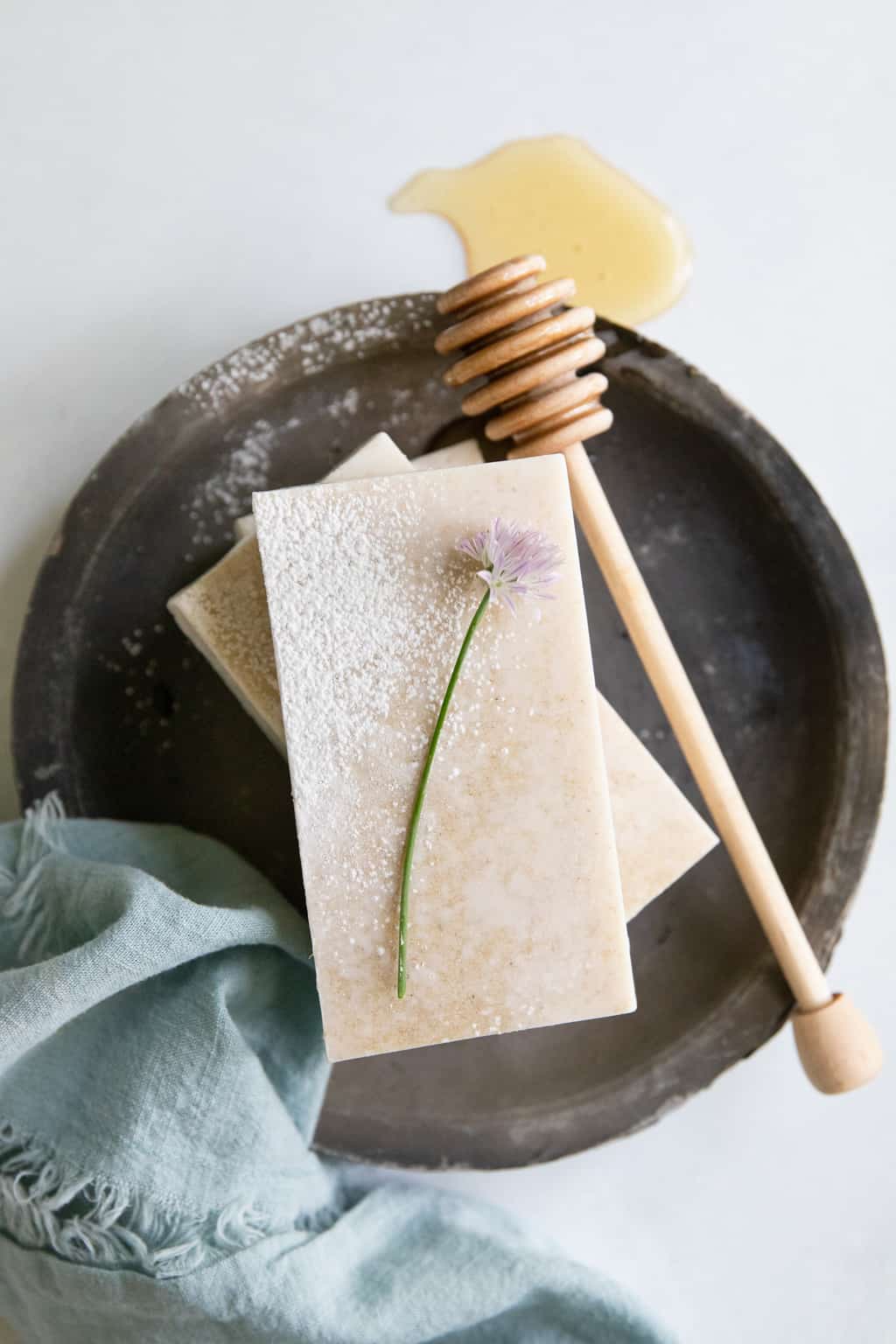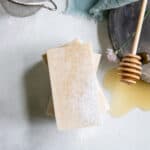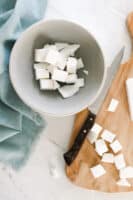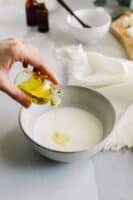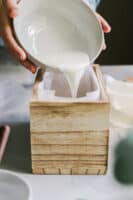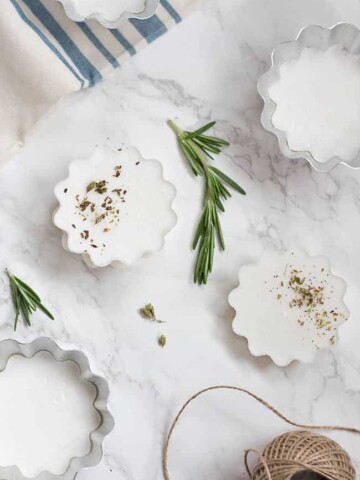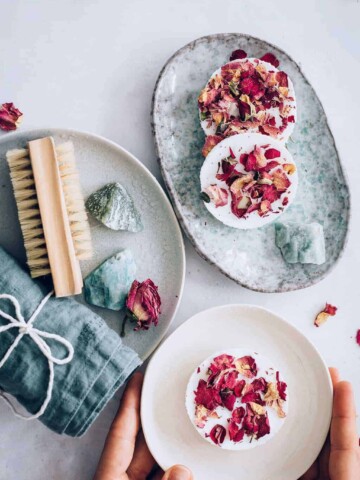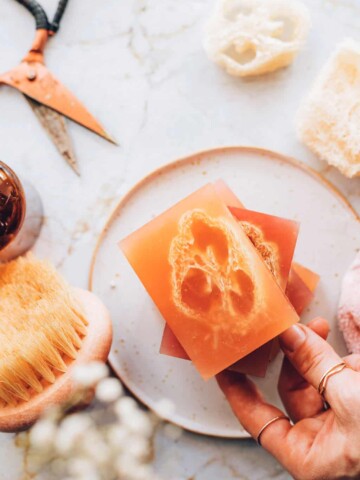Soapmaking really isn’t as scary as I once thought. While I did try my hand at making soap from scratch once (with lye, goggles, and everything), I much prefer leaving that to the pros. These days, it’s all about the melt-and-pour soap base.
After cleaning out my stash the other day, I came across several soap base remnants from past projects. Rather than throw them out, I decided to turn them into this super-hydrating goat milk soap. Perfect for things like eczema, sensitive skin, or just plain ol’ seasonal dryness, goat’s milk nourishes the skin and replenishes critical vitamins and nutrients so your skin stays soft and supple.
Benefits of Goat Milk Soap
I first tried goat milk soap years ago and immediately fell in love. If you have sensitive skin like I do, you need all the help you can get when it comes to keeping irritation at bay.
Goat’s milk contains fatty acids [source], proteins, and vitamins such as vitamin A [source], which are critical for maintaining healthy skin.
It’s loaded with lactic acid, an alpha-hydroxy acid [source] that helps slough away dead skin cells, minimizes skin inflammation, evens out skin discoloration, and may even reduce the appearance of mild hyperpigmented acne scars [source]. And thanks to an abundance of essential fatty acids, goat’s milk creates a moisture barrier that traps moisture in the skin and prevents it from drying out.
But even if you don’t suffer from eczema, psoriasis, or other sensitive skin issues, goat milk soap can still work magic. It does everything from balancing skin pH and fighting infections [source] to improving the signs of premature aging [source].
Seriously, it does it all.
For a little extra healing power, I also added raw honey and almond oil to this soap. Raw honey is antibacterial and full of antioxidants [source], while almond oil is loaded with vitamin E and essential fatty acids and has been shown to help improve skin tone and scarring [source].
Last but not least, a few drops of carrot seed and myrrh oils help reduce inflammation and promote healing.
How to Make Goat Milk Soap
Because it’s so gentle, this one bar of soap can be used as body wash, face wash, shampoo, bubble bath, and even shaving cream. I love making a big batch and storing the extra bars in my bathroom, so I always have some handy. I’ve also been known to give it to friends and family during the colder months so they can reap the benefits too.
Ingredients
-2 pounds melt-and-pour soap base (any kind will do, but I combined shea butter and oatmeal soap base)
-½ cup powdered goat’s milk
-2 tablespoons raw honey
-1 tablespoon almond oil
-30 drops carrot seed essential oil
-30 drops myrrh essential oil
-Soap mold
-Double boiler or microwave-safe bowl
Instructions
1. Chop the soap base into small cubes and place in a microwave-safe bowl. Microwave in 30-second intervals until completely melted.
2. Add the powdered goat milk, honey, and oils. Whisk well to get rid of any clumps.
3. Pour the soap into your mold and set aside to cool. Once it’s solidified, use a sharp knife to cut the soap into bars.
Goat Milk Soap FAQs
Can I use goat’s milk melt-and-pour soap instead of adding powdered goat’s milk?
Yes, you definitely can! It will save you a step, too, so it’s great if you’re in a hurry.
Can this be made with fresh goat’s milk?
I don’t recommend it. Food products like fresh goat’s milk will grow mold and cause your soap to go bad quickly.
Can I use maple syrup in place of the honey?
Yes, not only is maple syrup a humectant that draws moisture and locks it in, but it makes an awesome vegan alternative to honey.
How To Make Goat Milk Soap
Equipment
- Large bowl
- Soap mold
- Double boiler or microwave-safe bowl
Materials
- 2 pounds melt-and-pour soap (Any kind will do, but I combined shea butter and oatmeal soap base.)
- ½ cup powdered goat's milk
- 2 tablespoons raw honey
- 1 tablespoon almond oil
- 30 drops carrot seed essential oil
- 30 drops myrrh essential oil
Instructions
- Chop the soap base into small cubes and place in a microwave-safe bowl. Microwave in 30-second intervals until completely melted.
- Add the powdered goat milk, honey, and oils. Whisk well to get rid of any clumps.
- Pour the soap into your mold and set aside to cool. Once it’s solidified, use a sharp knife to cut the soap into bars.
Video
Notes
This post was medically reviewed by Dr. Rina Mary Allawh, M.D., a dermatologist who practices adult and pediatric medical dermatology, skin cancer treatment, and cosmetic dermatology. Learn more about Hello Glow’s medical reviewers here. As always, this is not personal medical advice, and we recommend that you talk with your doctor.
148
